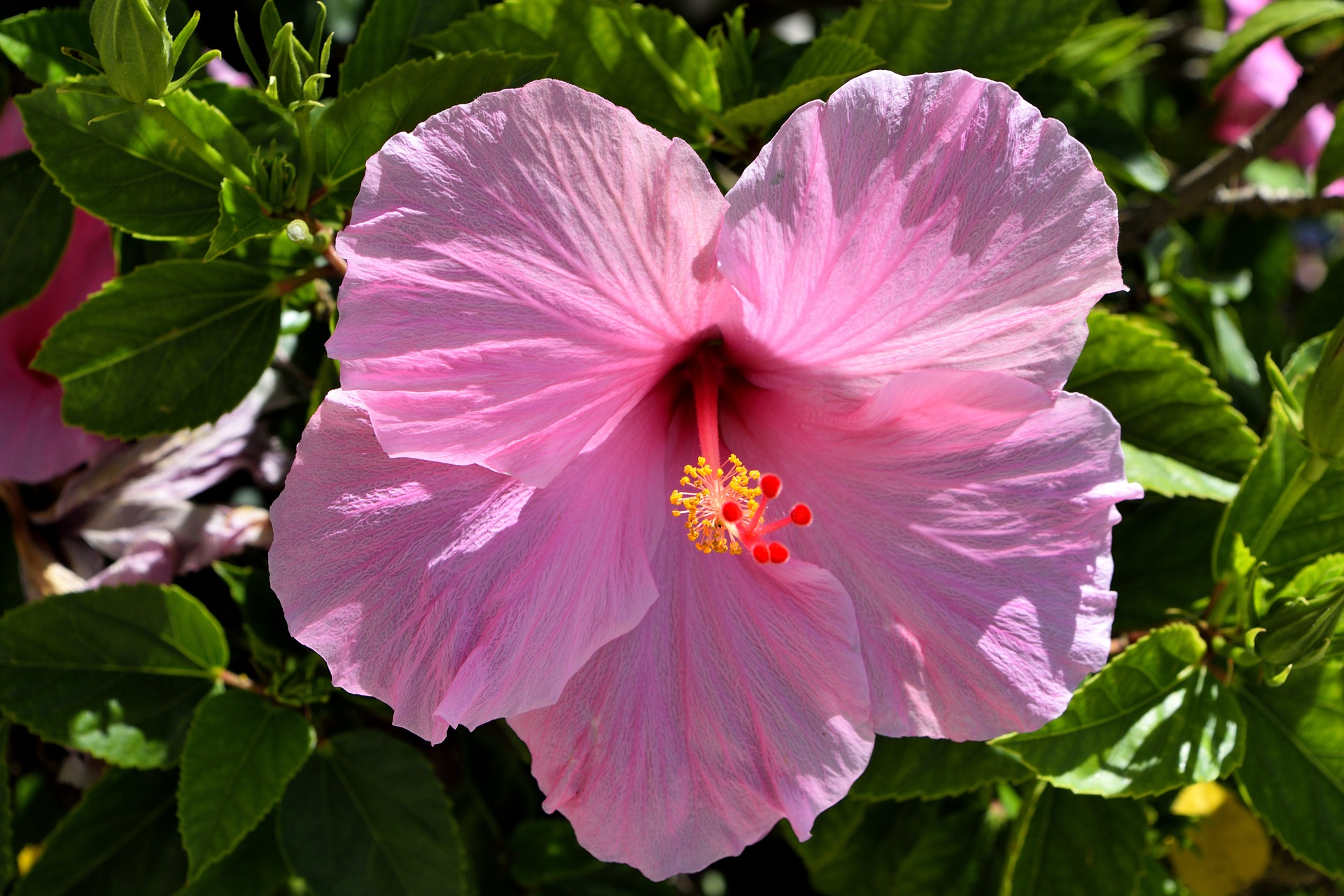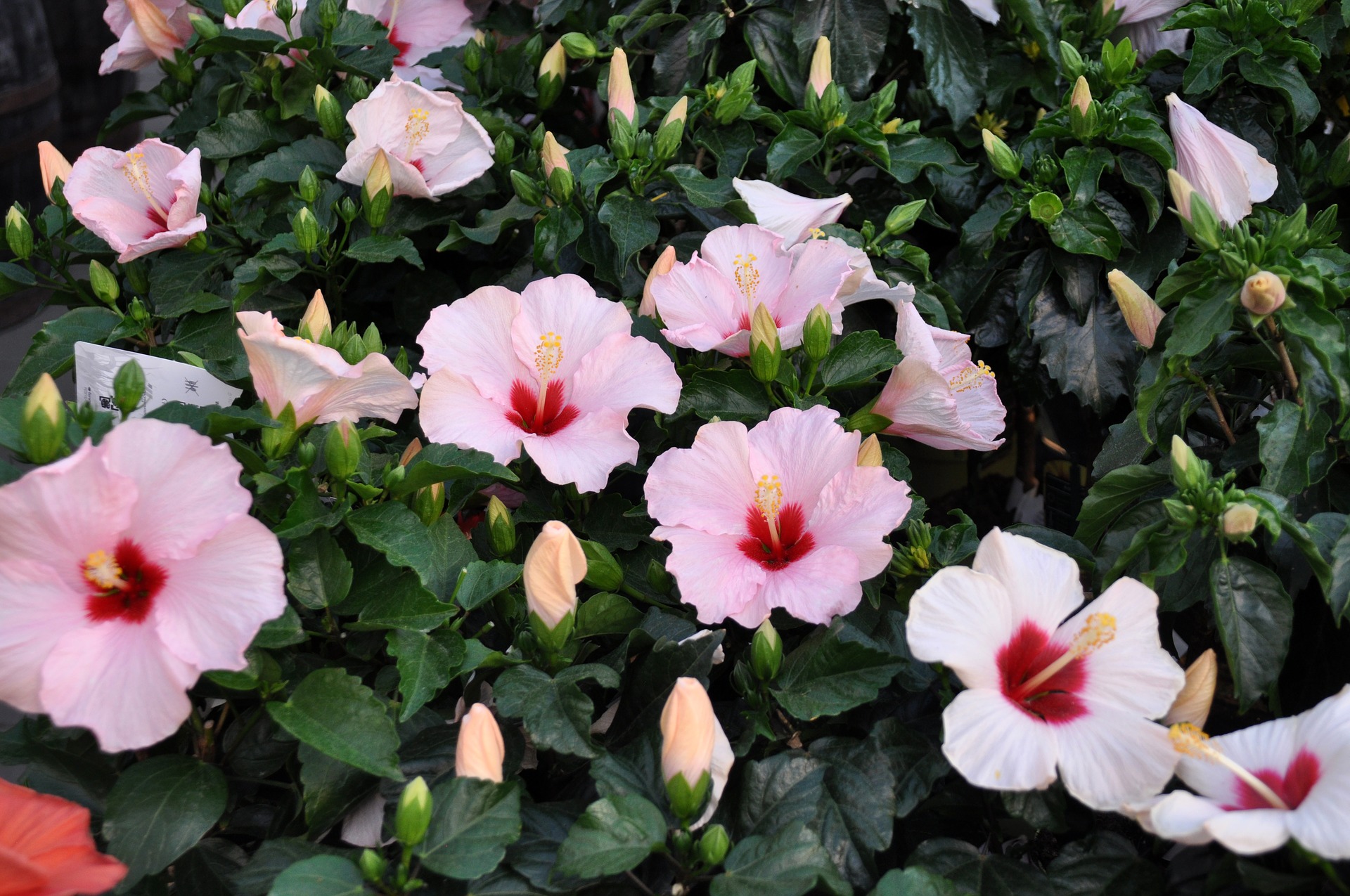Hibiscus can turn a plain garden into a gorgeous tropical paradise. The plant has large bright flowers that range from pink to yellow to red.
Hibiscus comes in numerous species, and the exact type that you choose determines the color of the flowers. When in full bloom, you can enjoy beautiful flowers from spring through fall.
However, you first have to know how to make hibiscus bloom to enjoy rich flowers. Hibiscus plants are not difficult to take care of once you grasp the basics.
So, whether you are caring for an existing shrub or planting a new one, know a few things about keeping hibiscus healthy.
Pick The Location
Hibiscus is a tropical plant. It requires about eight hours of sun, although it can survive in partial shade. Therefore, you need to consider the amount of sunlight an area gets before planting.
If your place is windy, then find a location with some protection. Hibiscus Flowers are delicate and thus can tear easily.
Your chosen location should also provide the plant with the ideal temperature, which is between 60° and 90° F.
Planting in containers is an option, especially in areas that experience harsh winters. Containers are suitable if ground planting is not a viable alternative due to the soil type or space constraints. The right hibiscus container should not be too large.
Although a deep container provides a lot of space for the plant to grow, it can be counterproductive. Most of the plant’s nutrients and energy go to the roots. Consequently, your hibiscus ends up with few flowers and a poor bloom.

Adequate Soil Preparation
The ideal soil for hibiscus should have a pH level of between 6.5 and 6.8. Hibiscus requires a slightly acidic environment.
Therefore, when selecting a planting location, make sure you check the soil pH. If the levels are high, you can decrease them with soil sulfur.
Conversely, use lime to increase the pH if it’s low. Note that it might take a couple of weeks to alter the soil to the desired acidity levels.
Hibiscus thrives in rich soil. So, if the soil is not rich enough, use compost to improve it. You can easily make compost at home, especially if you have sufficient space. Another alternative is to use earthworm castings.
One study shows that worm compost produced large and pretty hibiscus blooms.
Watering Requirements
Another secret of how to make hibiscus bloom is to keep the soil moist. After planting, water the plants daily for the first week. Then you can switch to maybe three times a week.
A mature plant needs the same amount of care because hibiscus loves water. During the blooming stage, you might have to water the plants daily, particularly when the weather is hot and dry.
If it rains, then you can water them every other day. Watering twice a day is not uncommon in extremely dry regions.
As much as hibiscus needs a lot of water, be careful not to overwater them. Soggy soil can ruin your plant.
In the winter, check if the soil is dry so that you can water it. Overwatering hibiscus in cold weather increases the risk of fungus disease in the roots.
Apart from regulating the water supply, the plant requires good drainage. Whether the hibiscus is in a container or the ground, make certain that water levels don’t get too high.
You can tell if a shrub needs water from droopy leaves. Yellowing leaves at the top is another sign. If you are overwatering it, the leaves appear in the middle of the plant.
How to Make Hibiscus Bloom through Pruning
Regular pruning gives the hibiscus room to bloom properly. The flowers usually bloom for a day and then fall off.
Therefore, after a while, your plant can have spent blooms all over. Ensure that you get rid of these dead flowers. Additionally, trim the shrub at least by a third to remove dead branches.
Alternatively, you can deadhead the plant by cutting and snapping the flowers that require it. Deadheading helps curb reseeding, thereby promoting healthy blooms.

Hibiscus Fertilizing
A slow-release fertilizer is ideal for a tropical plant like hibiscus. In fact, it comes applied to the soil when buying hibiscus for planting.
Water-soluble fertilizers are the best options for a lovely bloom. However, be careful not to apply too much. Excess fertilizer burns the roots and affects blooming.
When is the correct time to fertilize your shrub? The regime should be light and frequent. For the slow release variety, use it in early spring, after the initial bloom, in mid-summer and early winter. If it’s water-soluble, apply once every two weeks in summer and spring.
Overwintering Hibiscus
Due to the sunlight requirements of hibiscus, overwintering can be a bit difficult.
However, overwintering might be necessary if you leave in a cold climate region. When you are overwintering indoors, ensure that the plant receives at least 2-3 hours of sunlight. Placing it close to a window helps too.
Don’t forget to water your hibiscus during winter, even though it might not seem like it needs it. Indoor heating dries the air, and that affects the plant. For this reason, keep your shrub well hydrated.
With these tips on how to make hibiscus bloom, expect healthy and plentiful flowers throughout.
